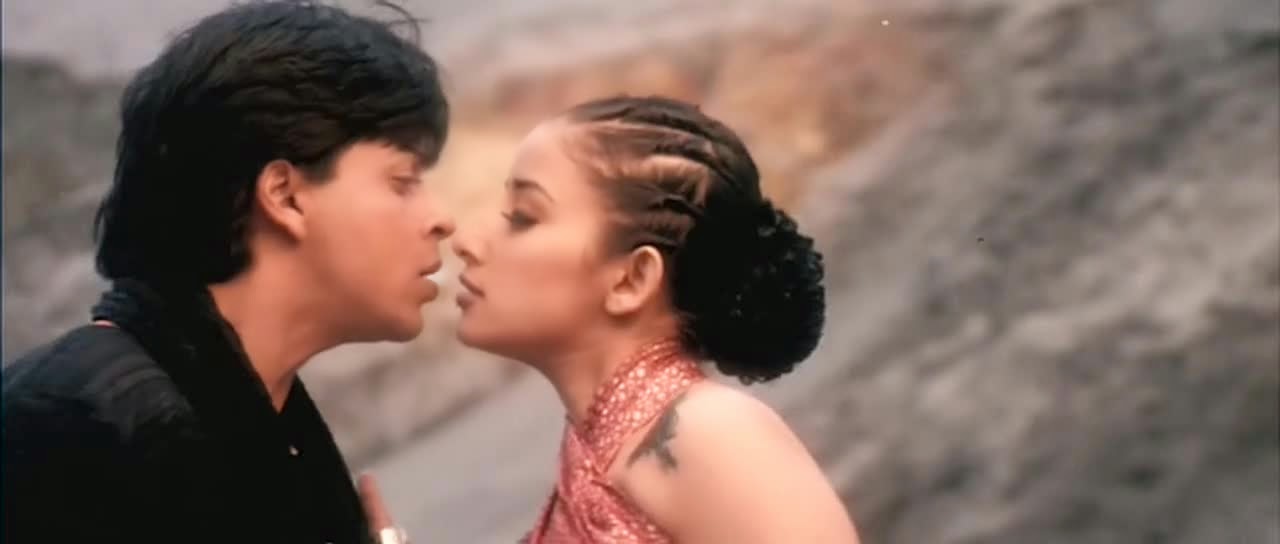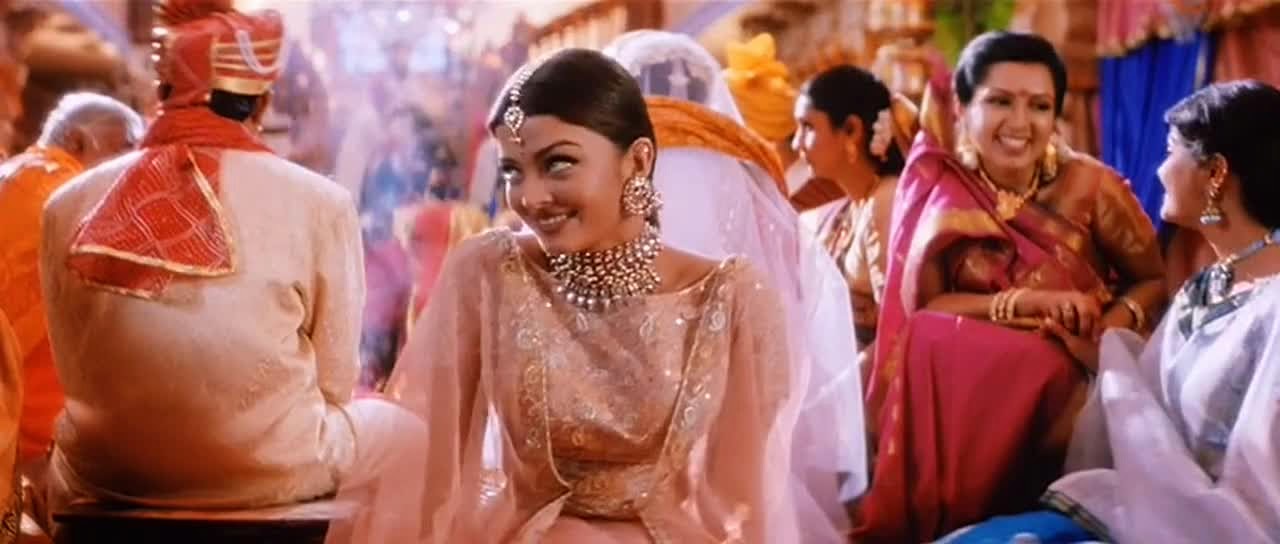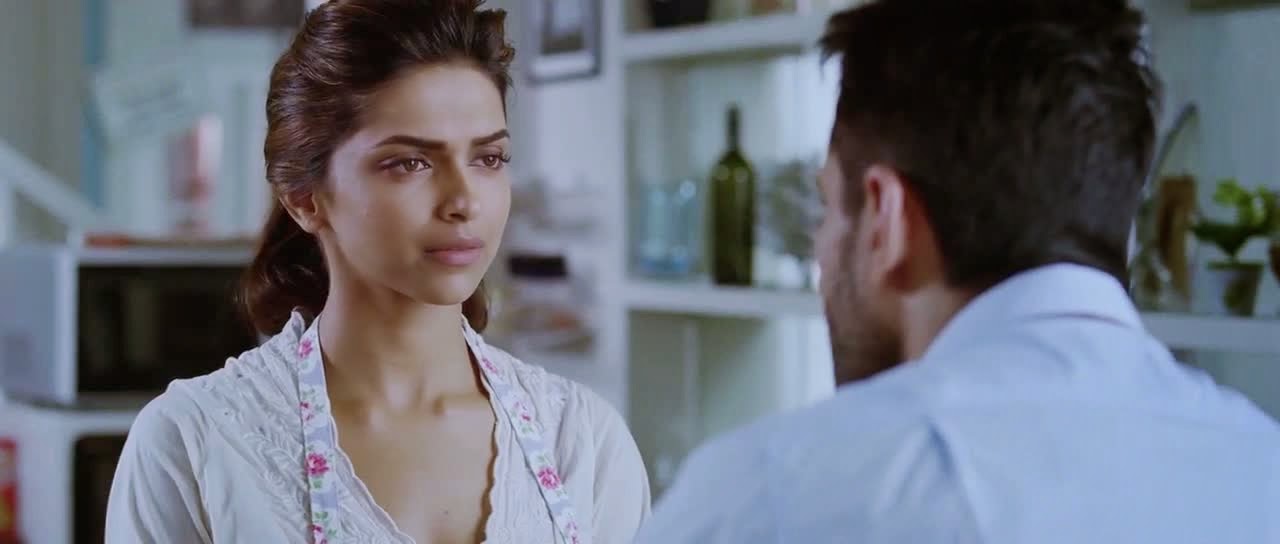Dil Se has been on my list of movies I have wanted to watch for the longest time. I have seen it only in parts when it came on TV sometimes. This week, I finally got some time to watch it. I have seen only about an hour of the movie and am already floored by its sheer beauty. I have always believed Dil Se to be A.R. Rahman's finest work. His music is spellbinding. Farah Khan's terrific choreography and Santosh Sivan's spectacular cinematography are some of the best I have seen in a Hindi film. However, this post is not on the film but on one song from the film—Satrangi Re. The music and the lyrics are thoughtful, having that characteristic Rahman vibe. The video is gorgeous. When I realized the depth of the song, I was amazed by how anyone can make something as beautiful and poetic as this. So, today, I try to deconstruct the meaning of Satrangi Re.
The word satrangi means something that has seven colors, and it is generally used to describe a rainbow. In the song, we see the seven colors of the rainbow — violet, indigo, blue, green, yellow, orange, and red — popularly known by the term — VIBGYOR. The song is filmed on two lovers, in which a man (Shah Rukh Khan) sings and expresses his love for a woman (Manisha Koirala). He calls her satrangi, and we, actually, see her in all the seven colors of the rainbow. Not only is this a literal depiction of the colors produced by the dispersion of light by a prism, but also of an underlying symbolism alluding to the seven stages of love. Earlier this year, Dedh Ishqiya's trailer talked about these seven stages. In Arabic literature, love is supposed to have seven stages. The seven stages are namely hub (attraction), uns (infatuation), ishq (love), akidat (trust/reverence), ibadat (worship), junoon (madness) followed by maut (death). Satrangi Re, in some way or another, whether through lyrics or the choreography, gloriously portrays these stages of love and charms us along.
The song begins, and we see both lovers dressed in black. The lyrics say,
Koi noor hai tu, kyun door hai tu,
Jab paas hai tu, ehsaas hai tu,
Koi khwaab hai ya parchhayi hai, satrangi re
Hub
It is as if some kind of light is attracting him to her. He wants to go near her and wonders why she is far away. At some point, he is near to her and at the other point, he is far away from her. When she is near, she appears to be a thought, a dream, and a shadow. The shadow is represented by the black color of her dress, and the enigmatic quality pulls him toward her. This is the first stage of love — hub.
Then, when he sees her in reality, she is far away from him. The distance between them is shown by the presence of water between them. She is wearing white, as pure as the snowflakes on her head. When he was dreaming, both of them were dressed in black, but now, she is away from him, and she is dressed in white, and he is dressed in black. To reach her, he has to cross this path and undertake a journey as if moving from darkness (black) to light (white).
Then, he says,
Aankhon ne kuch aise chhua,
Halka halka uns hua
He is infatuated by the touch of her eyes. His heart feels that infatuation. This is the second stage of love — uns.
Uns
Then, the lover sings,
Tere jism ki aach ko chhoote hi, mere saans sulagne lagte hain,
Mujhe ishq dilaase deta hai, mere dard bilakhne lagte hain
He says that as soon as he touches her body, his breath is ignited. His pain makes him cry, but his love for her consoles him. The fire in the tree behind them represents the fire burning inside him. This is the third stage of love — ishq — as is evident in the lyrics.
Ishq
Then, he says,
Chhooti hai mujhe sargoshi se,
Aankhon mein ghuli khamoshi se
He says he is enchanted by her fragrance. He is enthralled by the silence of her eyes. He is showing reverence and admiration, symbolized by the lighting of the lamps in the monastery. He looks at her with deep reverence in his eyes. She is his aarzoo. This is the fourth stage of love — akidat.
Akidat
After that, he begins to start worshiping her.
Main farsh pe sajde karta hoon,
Kuch hosh mein, kuch behoshi se
He kneels down on the floor and bows in front of her, sometimes consciously and sometimes unconsciously. Thus, he has reached the fifth stage of love—ibadat.
Ibadat
Now, he has become united with her, and they are joined to each other. Their passion is depicted by the red color.
After they become one, they dance in the water. She has now become the water of his life, symbolized by her blue- and indigo-colored dress. He cannot live without her if she leaves him, even for a few moments. He feels helpless when she goes away.


Teri raahon mein uljha, uljha hun
Teri baahon mein uljha, uljha,
Suljhane de hosh mujhe,
Teri chaahon mein uljha hun
Slowly and slowly, he is getting more and more entangled in her love. He wants to go back to his senses, but he is bound by her love. He simply cannot untie himself, even if he tries, as depicted by her rope dress and the net that he is trapped inside.
After that, he says,
Mera jeena junoon, mera marna junoon,
Ab iske siwa nahi koi sukoon
He is unable to free himself from her love, and it has become an obsession. His life is an obsession, like the deep violet of her dress, and it will be like this until he dies. Nothing brings peace to him except her love. He has entered the sixth stage of love—junoon.
Junoon
Finally, he says,
Mujhe maut ki god mein sone de,
Teri rooh mein jism dubone de
He wants to sleep in the lap of death. He wants to immerse his body in her soul. He has finally reached the seventh stage of love — maut. Also, it is worth observing that he is now wearing pristine white, like her, compared to the black he wore initially. He has crossed that pond of water (as was depicted earlier) and transcended the barriers to reach her. He has undertaken all the steps of his journey, and all that he wishes for now is death in her arms so that he can be in peace. Perhaps both of them have attained some salvation and some cosmic redemption, which is why a white heavenly aura around them starts shining. He has finally attained his death, and his spiritual voyage encompassing the stages of love has reached its destination — his lover.
Maut
As beautiful as a song can be. Also, particularly note that we see all the colors of the rainbow in her dresses, apart from black and white, again referring to those stages.
Seriously, can there be a song more beautiful than this one? I found out that Mani Ratnam said in an interview that this was his intention. He had given directions to Rahman that he wanted to make a song based on the seven stages of love. There is so much more to our movies, and I wish more people could see the brilliance of Hindi cinema.








































